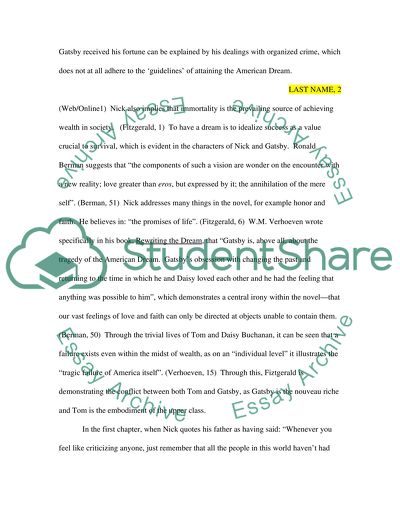Cite this document
(“The American Dream Explored in The Great Gatsby by F. Scott Fitzgerald Book Report/Review”, n.d.)
The American Dream Explored in The Great Gatsby by F. Scott Fitzgerald Book Report/Review. Retrieved from https://studentshare.org/literature/1522537-american-dream-essay
The American Dream Explored in The Great Gatsby by F. Scott Fitzgerald Book Report/Review. Retrieved from https://studentshare.org/literature/1522537-american-dream-essay
(The American Dream Explored in The Great Gatsby by F. Scott Fitzgerald Book Report/Review)
The American Dream Explored in The Great Gatsby by F. Scott Fitzgerald Book Report/Review. https://studentshare.org/literature/1522537-american-dream-essay.
The American Dream Explored in The Great Gatsby by F. Scott Fitzgerald Book Report/Review. https://studentshare.org/literature/1522537-american-dream-essay.
“The American Dream Explored in The Great Gatsby by F. Scott Fitzgerald Book Report/Review”, n.d. https://studentshare.org/literature/1522537-american-dream-essay.


